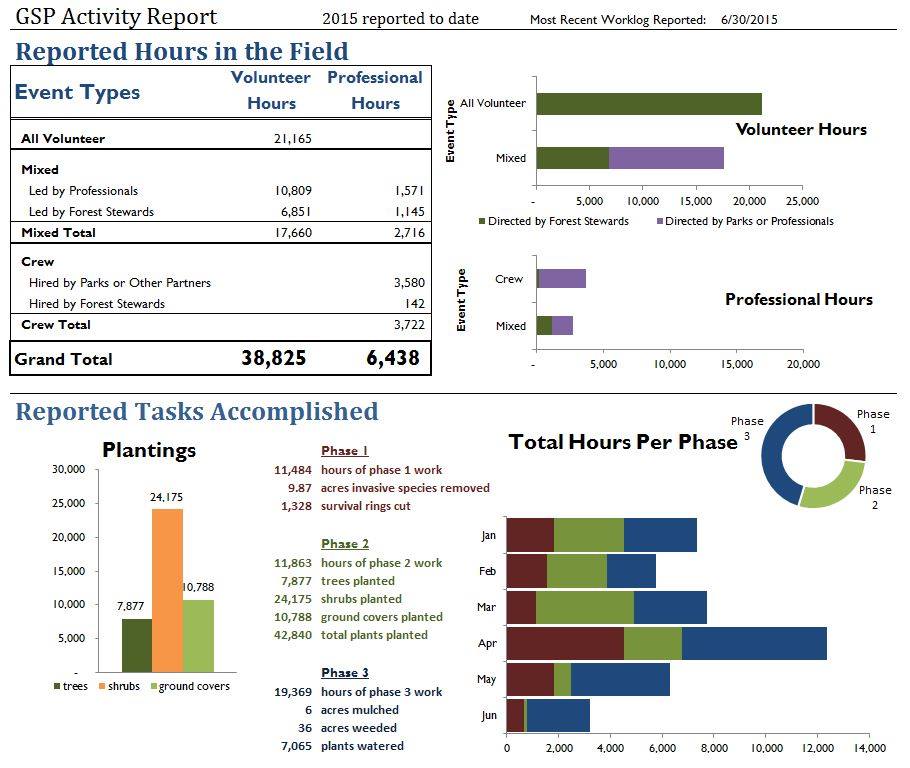In order to meet the overall GSP goal of re-establishing and maintaining healthy urban forests by the year 2025, we strive to meet a number of primary targets each and every year: 1) new acres of invasive plants removed, 2) plants installed (planted), 3) acres of weed maintenance, and 4) volunteer hours (a measure of work, but also of community engagement) contributed to the restoration effort. Below you will see our “Dashboard” activity report which we update each month to report on our progress.
How do we collect this data? Every time someone actively engages in a restoration activity, the lead person submits a “worklog” into an online portal, the Central Data Repository (CEDAR). Each worklog record is part of the story of what takes place in a specific restoration zone within a park. These are the inputs of time and energy as well as materials (e.g. plants, mulch, etc.) that go into the restoration.
Restoration takes place at a fairly rapid pace in the city. Truthfully, on just about any given day, one can find volunteer Forest Stewards and project partners coordinating work parties to remove ivy and blackberry, Parks and Recreation staff monitoring a forest for sporadic weeds, or contractors delicately hand-watering hundreds of plants at a time.
It doesn’t end there. On the back end, we monitor the output of all the energy and materials that go into forest restoration through an annual inventory. Data is collected about existing tree canopy cover, non-native weed cover, regenerating trees, plant species diversity, etc. Watching closely, you can a track change by phase of restoration on the GSP Reference Map.
We actually use the data too! Now, ten years into the GSP 20-Yr Strategic Plan, we can begin to analyze this data (the inputs as well as the outputs), derive more accurate costs, and adapt our annual goals appropriately to get the most out of all of our hard work. We count it all; square foot by square foot and plant by plant, we can begin to see healthy forests evolve from all the time, energy and resources we collectively contribute.
This process may seem a bit complex, but a disciplined amount of geeking out on data along with some thoughtful stewardship will ensure that future generations can enjoy the beauty and splendor of Seattle’s forests in the future. Power to the Partnership!
If you want to learn more, you can watch a webinar that we presented in May 2015 as part of the U.S. Fish and Wildlife Service’s restoration webinar series: “Are We There Yet? The Green Seattle Partnership Turns 10“



lets go green for better future 🙂
#PowerToThePartnership!